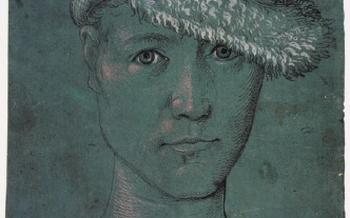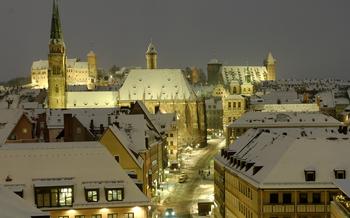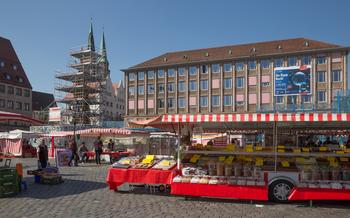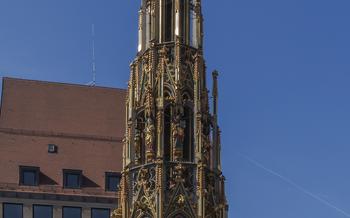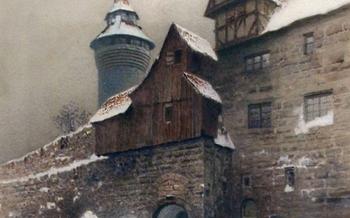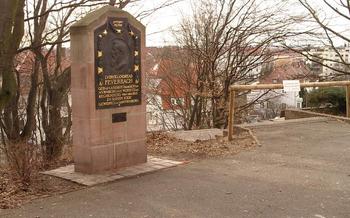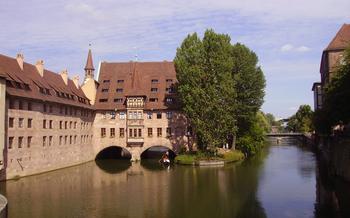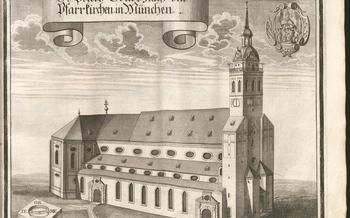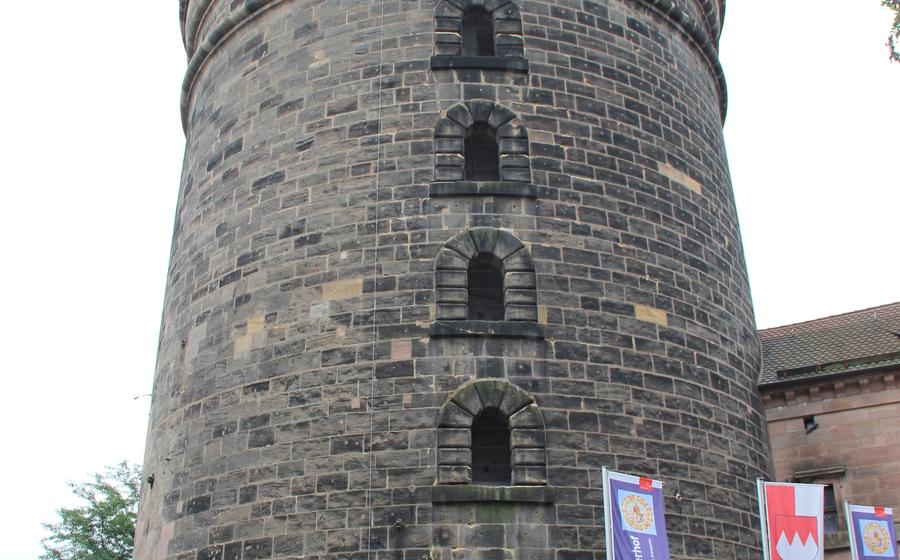
Frauentorturm
- Frauentorturm: A Majestic Entrance to Nuremberg's Rich History
- Exploring the Tower's Fortified Past
- Unveiling the Tower's Architectural Details
- Frauentorturm's Role in Nuremberg's City Walls
- Frauentorturm: A Symbol of Resilience
- Guided Tours to Discover the Tower's Secrets
- Admission Fees and Opening Hours
- Frauentorturm's Contribution to Nuremberg's Skyline
- Frauentorturm's Location and Accessibility
- Historical Events Associated with the Tower
- Frauentorturm's Role in Modern-Day Nuremberg
- Nearby Attractions to Explore
- Insider Tip: Unveiling the Hidden Treasures
Frauentorturm: A Majestic Entrance to Nuremberg's Rich History
Step into the annals of Nuremberg's storied past through the Frauentorturm, a magnificent tower that stands as a testament to the city's resilience and architectural prowess. Constructed as part of the medieval city fortifications in the 14th century, this imposing structure played a crucial role in defending Nuremberg against countless sieges and conflicts.
As you approach the Frauentorturm, its sheer size and grandeur are awe-inspiring. Its round shape and imposing height, reaching over 60 meters, dominate the skyline, a testament to the engineering skill of its builders. Gothic-style ornamentation adorns the tower's exterior, with intricate carvings and sculptures that reveal the artistic sensibilities of the era.
Ascending to the tower's observation deck, you'll be rewarded with breathtaking panoramic views of Nuremberg's Old Town and its iconic landmarks. From this vantage point, you can trace the city's rich history, with its red-roofed houses, towering churches, and the winding Pegnitz River meandering through the heart of the city.
More than just a historical monument, the Frauentorturm is a symbol of Nuremberg's enduring spirit. Having withstood the ravages of time, wars, and conflicts, it stands as a reminder of the city's ability to rise from adversity. Locals and visitors alike revere the tower as a beloved landmark, a tangible link to Nuremberg's rich cultural heritage.
Exploring the Tower's Fortified Past
Constructed in the 14th century, the Frauentorturm played a crucial role in defending Nuremberg's city walls. Its strategic location allowed guards to monitor approaching threats and sound the alarm in case of danger. During conflicts and sieges, the tower served as a strongpoint, providing a vantage point for archers and crossbowmen to repel enemy forces. Over the centuries, the tower underwent several modifications and additions, reflecting the evolving defensive needs of the city. Today, the Frauentorturm stands as a testament to Nuremberg's rich history and its enduring legacy as a symbol of strength and resilience.
Unveiling the Tower's Architectural Details
The Frauentorturm stands out for its distinctive round shape, a unique feature among Nuremberg's medieval towers. Its imposing height, reaching 60 meters, commands attention and offers breathtaking views of the city. The tower's exterior is adorned with intricate Gothic-style ornamentation, showcasing the craftsmanship and artistic flair of its builders. Gargoyles, pinnacles, and delicate carvings embellish the tower's façade, adding to its visual appeal.
Each design element carries symbolic significance, reflecting the tower's role and the values it represents. For example, the gargoyles are believed to ward off evil spirits, while the pinnacles symbolize the tower's connection to the heavens. The intricate carvings depict scenes from the Bible and local legends, providing a glimpse into the beliefs and stories that shaped Nuremberg's identity.
In comparison to other medieval towers in Nuremberg, the Frauentorturm stands out for its unique circular shape. While most towers in the city feature a square or rectangular base, the Frauentorturm's rounded design sets it apart, making it an iconic landmark in its own right. The tower's height and ornamentation further contribute to its distinction, creating a striking contrast against the backdrop of the city's skyline.
Frauentorturm's Role in Nuremberg's City Walls
The Frauentorturm was an integral part of Nuremberg's medieval city fortifications, a formidable system designed to protect the city from invaders. It stood as one of several towers and gates that formed a continuous circuit around the city, creating a defensive barrier against potential threats. The tower's strategic location at the western entrance to the city made it a crucial point of defense, as it controlled access to one of the main routes into Nuremberg.
The city walls, constructed in the 14th and 15th centuries, were a testament to Nuremberg's prosperity and power during the Middle Ages. They consisted of a double ring of walls, punctuated by towers and gates, creating a formidable barrier that few armies could penetrate. The Frauentorturm, with its imposing height and sturdy construction, played a vital role in this defensive system, ensuring the city's security and contributing to its reputation as an impregnable fortress.
Over the centuries, the city walls underwent several modifications and expansions, adapting to changing warfare tactics and the growing size of the city. The Frauentorturm, however, remained a constant presence, standing guard over Nuremberg's western approach. It witnessed numerous conflicts and sieges, serving as a stronghold for the city's defenders and a symbol of their unwavering resilience.
Today, the Frauentorturm stands as a testament to Nuremberg's rich history and its commitment to preserving its architectural heritage. Although the city walls were mostly demolished in the 19th century, the Frauentorturm remains as a reminder of the city's medieval fortifications, a symbol of its resilience, and a source of pride for its citizens.
Frauentorturm: A Symbol of Resilience
Amidst the bustling streets of Nuremberg, the Frauentorturm stands tall, a testament to the city's enduring strength and resilience. Despite enduring the ravages of wars and conflicts, this 14th-century tower remains an indomitable symbol of Nuremberg's spirit. Its sturdy walls have borne witness to countless trials and tribulations, yet it continues to stand proudly as a beacon of hope and fortitude.
The Frauentorturm represents the resilience of the Nuremberg people, who have repeatedly rebuilt their city from the ashes of destruction. It is a reminder that even in the face of adversity, the human spirit can prevail. The tower's enduring presence has become a source of inspiration and pride for the citizens of Nuremberg, who see it as a symbol of their city's unyielding determination.
Over the centuries, the Frauentorturm has become deeply embedded in Nuremberg's cultural identity. It has inspired local legends and stories, further solidifying its status as a symbol of the city's resilience. These tales often revolve around themes of bravery, perseverance, and the triumph of good over evil, reflecting the values that the people of Nuremberg hold dear.
The Frauentorturm stands as a testament to the indomitable spirit of Nuremberg, a city that has risen from the ashes of destruction time and time again. Its enduring presence is a source of inspiration and pride for the citizens of Nuremberg, who see it as a symbol of their city's unyielding determination.
Guided Tours to Discover the Tower's Secrets
Complement your visit to the Frauentorturm by embarking on a guided tour, an excellent way to delve deeper into its rich history and architecture. These tours, available in various languages, provide an immersive experience that unveils the tower's hidden secrets. Knowledgeable guides will lead you through the tower's interior, narrating tales of medieval guards and citizens who once occupied these spaces. They'll point out intricate details, symbols, and design elements that might otherwise go unnoticed, offering insights into the tower's construction and significance. With a guided tour, you'll gain a profound understanding of the Frauentorturm's role in Nuremberg's past, leaving you with a lasting appreciation for this remarkable landmark. Don't miss this opportunity to uncover the tower's mysteries and immerse yourself in the captivating stories that have shaped its legacy.
Admission Fees and Opening Hours
Admission Fees: - Adults: [Specify the amount in Euro] - Children (6-17 years): [Specify the amount in Euro] - Families (2 adults and up to 3 children): [Specify the amount in Euro]
Opening Hours: - Summer (April-September): [Specify the hours, e.g., 9 am to 6 pm] - Winter (October-March): [Specify the hours, e.g., 10 am to 4 pm]
Tips: - Avoid crowds by visiting early in the morning or late in the afternoon. - Plan your visit during the off-season (November-March) for a more peaceful experience. - Purchase tickets online to skip the queue and secure your entry.
Frauentorturm's Contribution to Nuremberg's Skyline
The Frauentorturm's distinctive silhouette is an integral part of Nuremberg's skyline. Its imposing height and round shape make it a prominent landmark visible from various points throughout the city. The tower's unique design, characterized by its Gothic-style ornamentation and intricate carvings, adds to its visual appeal. Its presence contributes to the city's rich architectural heritage and creates a picturesque backdrop for photographs. Whether viewed from afar or up close, the Frauentorturm serves as a reminder of Nuremberg's rich history and cultural significance. Its unique silhouette has become synonymous with the city and is instantly recognizable to locals and visitors alike.
Frauentorturm's Location and Accessibility
The Frauentorturm is conveniently situated in the heart of Nuremberg's Old Town, making it easily accessible on foot from many other attractions. Its exact address is Frauentormauer 2, 90403 Nuremberg, Germany. For those arriving by public transportation, the closest U-Bahn station is Lorenzkirche, which is just a short walk away. Alternatively, several bus lines stop nearby, including lines 36, 37, and 90. For those arriving by car, there are several parking garages within a short distance, such as the Parkhaus am Opernhaus and the Parkhaus am Hauptmarkt. It's worth noting that the tower is wheelchair accessible, ensuring that everyone can enjoy its historical grandeur.
Historical Events Associated with the Tower
Throughout its existence, the Frauentorturm has witnessed and been a part of numerous historical events that shaped Nuremberg's destiny. In the 15th century, during the Hussite Wars, the tower played a crucial defensive role, repelling attacks from the Hussites, a religious reformist movement from Bohemia. In the 16th century, the tower was involved in the Second Margrave War, when Albert Alcibiades, Margrave of Brandenburg-Kulmbach, attempted to conquer Nuremberg. The tower's strong fortifications helped the city withstand the siege. During the Thirty Years' War in the 17th century, the tower was once again instrumental in defending the city against invading forces. These historical events have left an indelible mark on the Frauentorturm, making it a testament to Nuremberg's resilience and fortitude.
Frauentorturm's Role in Modern-Day Nuremberg
In contemporary times, the Frauentorturm stands as a revered historical landmark and a prominent tourist attraction in Nuremberg. Its enduring presence serves as a testament to the city's commitment to preserving its rich heritage. The tower's significance extends beyond its architectural and historical value, as it plays a vital role in promoting Nuremberg's cultural heritage and tourism industry.
The Frauentorturm is a popular destination for tourists from around the world who are drawn to its captivating history and unique charm. Its inclusion in guided city tours and educational programs ensures that future generations can learn about Nuremberg's past and appreciate the tower's enduring legacy.
Furthermore, the tower's distinctive silhouette and historical significance have made it a symbol of Nuremberg's dedication to preserving its architectural heritage. It serves as a reminder of the city's resilience in the face of adversity, inspiring locals and visitors alike to explore and appreciate the many historical treasures that Nuremberg has to offer.
Nearby Attractions to Explore
Nuremberg offers a wealth of historical and cultural attractions within easy reach of the Frauentorturm. Take a stroll through the picturesque Old Town, with its cobblestone streets, half-timbered houses, and charming squares. Visit the nearby Albrecht Dürer House, where the renowned German artist lived and worked, or explore the fascinating history of the city at the Nuremberg City Museum. For a touch of grandeur, visit the imposing Nuremberg Castle, perched atop a hill overlooking the city. Don't miss the chance to marvel at the intricate details of the Gothic St. Sebaldus Church or immerse yourself in the world of toys and games at the Nuremberg Toy Museum. With so much to see and do, Nuremberg is a city that will leave you enchanted and eager to return.
Insider Tip: Unveiling the Hidden Treasures
The Frauentorturm holds a secret passageway that leads visitors to the tower's interior, revealing hidden treasures that are not accessible to the general public. This passageway, once used by guards and messengers, offers a unique and immersive experience for those who seek to delve deeper into the tower's history. To access the passageway, look for a discreet door hidden within the tower's walls. Once inside, you'll be transported back in time as you navigate the narrow corridors and climb the winding staircases. The passageway leads to hidden chambers and secret viewpoints that provide a glimpse into the tower's past. Discover the stories etched into the walls, uncover the remnants of medieval graffiti, and experience the thrill of exploring a hidden gem that few visitors get to see. It's a truly unforgettable experience that adds an extra layer of intrigue to your visit to the Frauentorturm.
